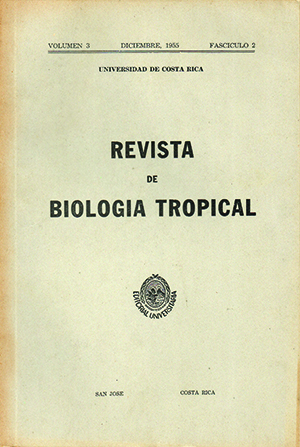Abstract
An investigation of the various canker diseases of coffee in Costa Rica gave the following results: 1. The fungus Rosellinia sp. (possibly R. bunodes) was found to be responsible for black canker. In many instances another fungus, Fusarium sp., was also isolated and when present it changed the symptomatology of the disease. 2. The following fungi were obtained from isolations of the white root canker: Trichoderma sp., an unidentified jade green fungus, and Rosellinia sp. and their pathogenicity was established. Two bacteria were also isolated, but their patogenicity cauld not be established. The presence of these three pathogens indicates that white canker is caused by their combined action upon. 3. The principal agent of ulcerated canker was found to be Curvularia sp., although the fungus Fusarium oxysporum f. coffeae (Alv. ) Wellm. was frequently isolated and its pathogenicity established. An unidentified yellow fungus was also isolated, but its pathogenicity was not tested. 4. The following pathogens were found to be responsible for the reddish brown canker: Cylindrosporium sp., Fusarium oxysporum and Tubercularia sp. 5. Rhizoctonia solani Kühn was the causal agent of canker in coffee seedlings. The lesions caused by this fungus were found to heal in many instances. Six-month old plants inoculated with Rhizoctollia solani remained disease-free. 6. Four species of cut worms, Feltia sttbterranea F., Feltia malefida Gn., Agrotis ypsilon Rott., and A. repleta Walk. were found to produce canker in the coffee plants, the degree of infection varying according to the age of the plants and insects. Fungi of the genera Fusarium and Colletotrichum were also isolated from these lesions. 7. The fungus Trichoderma sp. had an inhibitory effect on Rhizoctonia solani in vitro. The pathogenicity of Trichoderma to coffee was also established. 8. Aqueous solutions of Fermate and Perenox applied to the soil were successful in the control of white canker and R. solani lesions. 9. Seed disinfection using the hat water treatment method is not an effective preventive measure, as germination is greatly reduced.##plugins.facebook.comentarios##
Downloads
Download data is not yet available.






